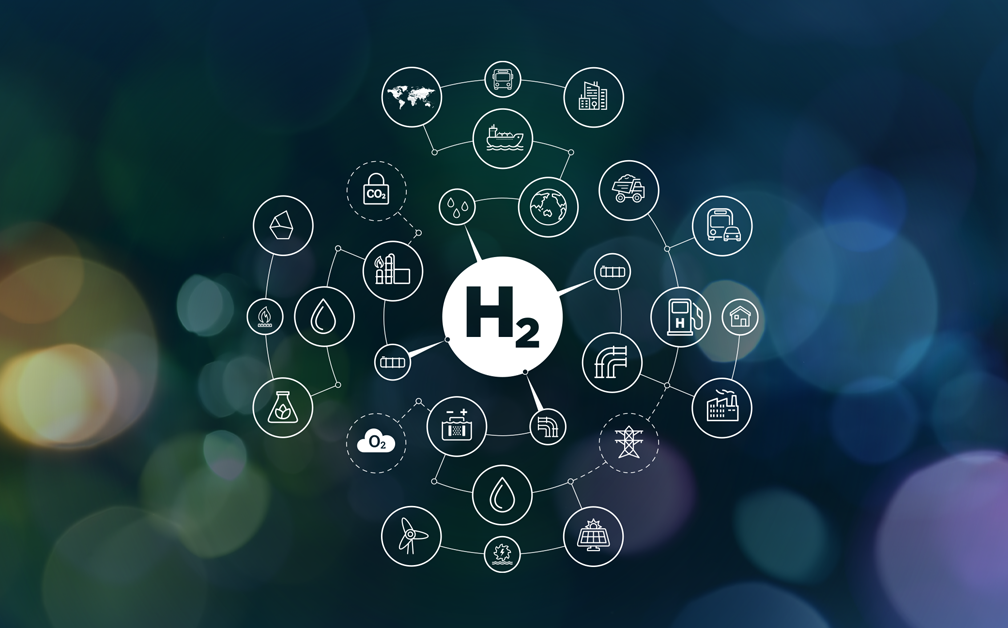The Australian government envisions Australia as a renewable energy superpower, with the Future Made in Australia policy committing billions to building a domestic hydrogen industry. For decades, optimists have called hydrogen the fuel of the future, while cynics have said it’s 20 years away—and always will be. Hydrogen offers Australia, particularly northern Australia, great economic opportunity. But more policy work is needed to achieve this opportunity.
The history of hydrogen fuel and industry reveals ambitious promises and disappointing results. Is Australia poised to lead in this energy revolution, or are we caught in a hype cycle?
Hydrogen could help decarbonise sectors including long-haul transportation, ammonia manufacturing, steel making and other industrial processes, commonly by replacing metallurgical coal and natural gas. But transitioning to hydrogen is not easy.
In 2003, then-US president George W Bush pledged US$1.7 billion to hydrogen fuel initiatives and programs to develop more environmentally friendly transportation technologies. Bush dreamed that when children born in 2003 bought their first cars, those cars would be hydrogen powered. 21 years later, their first cars likely still had regular combustion engines.
Despite various initiatives, estimated global hydrogen fuel cell passenger car stock is only 93,000 cars. Instead, electric vehicles are leading in decarbonising road transport: more than 10 million electric vehicles were sold in 2022, about 14 percent of all new car sales. S&P Global projected 13.3 million electric-vehicle sales in 2024 (an estimated 16 percent of total new car sales).
Some analysis attributes the long-running ups and downs of hydrogen hype cycles to both internal factors (such as technological innovation) and external factors (such as domestic politics and national security). The risk is that Australia may now be investing in hydrogen due to these external factors, rather than technological progress and at the cost of investing in other, more successful clean technologies.
The Future Made in Australia initiative commits $8.0 billion to hydrogen over the next 10 years. This includes $6.7 billion through the hydrogen production tax incentive and a further $1.3 billion to the Hydrogen Headstart program, which funds large-scale hydrogen projects.
Northern Australia can especially benefit from the clean energy transition generally, potentially including hydrogen. Its energy expertise, abundant opportunities for building solar farms, and port infrastructure make it uniquely suited to hydrogen production. Government support is also needed—and each jurisdiction in northern Australia has developed a hydrogen strategy and has committed resources to supporting projects.
For example, the Northern Territory government has fast-tracked tracking a proposed H2 green-hydrogen hub at Darwin’s Middle Arm Sustainable Development Precinct. Major hydrogen projects in Tenant Creek, the Tiwi islands are also being explored. Federal and state funding is also backing development of hydrogen hubs in Townsville and the Pilbarra.
However, industry remains wary of over-extending into hydrogen. In October, utility Origin Energy announced its withdrawal from a major hydrogen project in NSW’s Hunter Valley that had been shortlisted for Hydrogen Headstart funding.
Widespread use of hydrogen is possible, but there is no guarantee that the potential will be realised soon. Electrolysis technology faces significant scaling difficulties, and just 4 percent of proposed hydrogen projects globally reach the stage of a final investment decision. Australia has the largest pipeline of hydrogen projects in the world, with an estimated value of more than $225 billion. But as of July 2024, only three of the 76 projects were under construction.
Concerningly, hydrogen has unaddressed demand issues, according to the International Energy Agency. The government is optimistic about massive growth in hydrogen demand by 2050. But projections to 2050 often rely on growth in new applications for hydrogen—such as in heavy industry, long distance transport and energy storage—accounting for up to one third of consumption. Yet these new applications currently account for just 1 percent of total demand. Governments and investors must be wary of the discrepancy.
Valuations of the global clean hydrogen sectors are in decline. In early 2021, S&P’s Hydrogen Economy Index, which measures the value of clean hydrogen companies across the supply chain, peaked at US$293. After steady decline it is now at US$116.
Still, Australia should not necessarily give up its hydrogen bet. But we must remain aware that plenty of work is needed for it to pay off.
Further policy measures are needed. Foreign investment will be needed to grow and sustain the industry. International partners such as the United Arab Emirates—with its capital, investments in hydrogen, national hydrogen strategy, long experience in energy, and free trade agreement with Australia—will be important to realising Australia’s hydrogen potential.
The government and industry will have to communicate more to reduce costs, increase hydrogen competitiveness and understand why major companies are withdrawing from projects.
Governments must prioritise research and development into clean hydrogen production and new hydrogen applications. Australia needs innovation to get a competitive advantage.
Finally, the federal government must deliver on the National Hydrogen Strategy and be ready to adjust it to reflect market situations. The strategy is promising, but it must coordinate the federal government, state and territory governments, and industry to deliver an Australian hydrogen economy.

